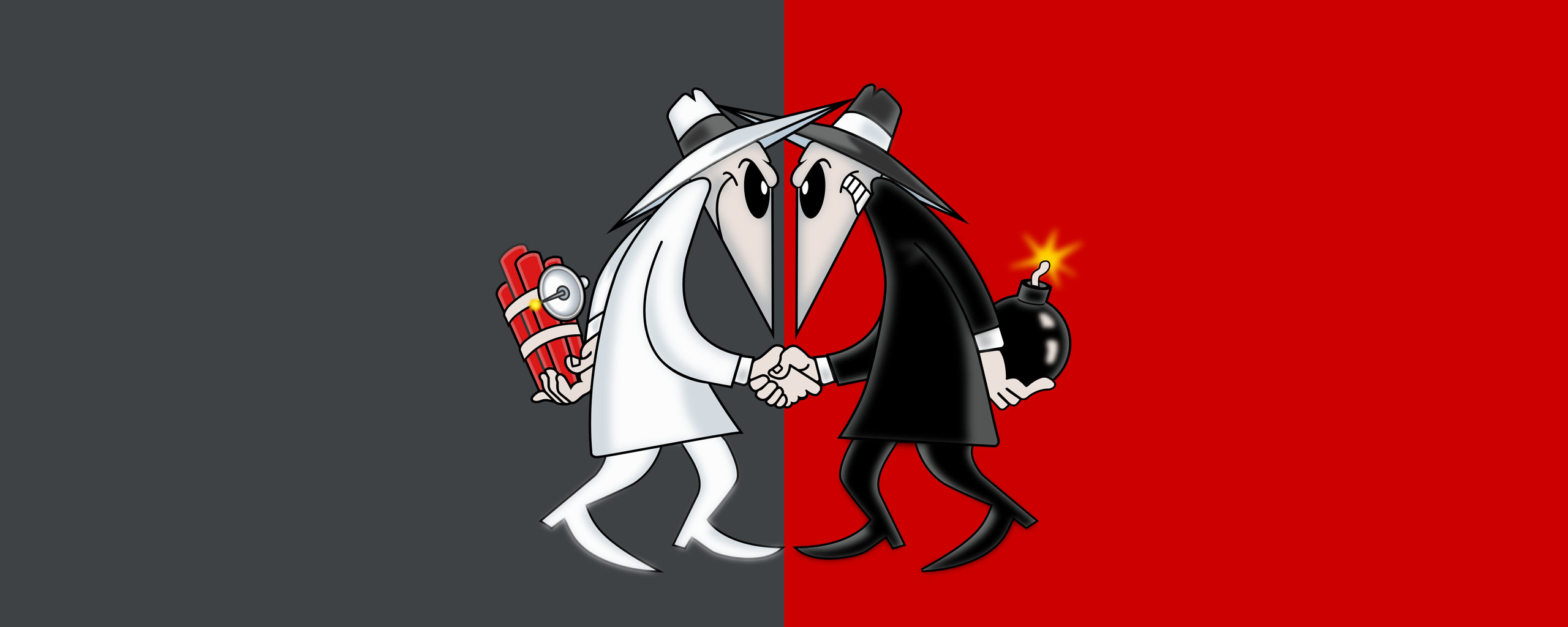Pushing the Envelope on the Last Day of Class
By the last class of the semester, everyone involved is usually pretty tired, and it can be a challenge to keep students engaged when you are reviewing material they’ve already seen. Instead of giving a greatest hits of the semester, I like to have students work through problems that combine multiple topics. This time around, I decided to up the ante and make the problems a little provocative.

We started with a standard duopoly (two firm) problem, but quickly introduced industrial espionage (H/T the great Larry Samuelson):
- Suppose that firm 2 is concerned that it might be wrong about how much output firm 1 is going to produce, and so hires an industrial spy who can (reliably) report firm 1’s output to firm 2 before firm 2 makes a decision.
- Also assume firm 1 knows that firm 2 has hired such a spy. As a result, firm 1 knows that whatever quantity it produces, firm 2 will respond by producing an amount that maximizes their profit given firm 1’s choice.
What are the new equilibrium quantities chosen by the firms? Some astute readers might recognize this as a Stackelberg model, something we didn’t actually cover at all earlier in the term. Was it reasonable to expect students to be able to derive it on the fly? Actually, I think yes. All semester I emphasized stepping back and modeling the pieces of the economy, choosing the appropriate equilibrium concept, and then putting it all together. The key here is to work backwards. Firm 2 moves second—How will they react to firm 1? Firm 1 knows this reaction function because they know firm 2 has a spy and that they will make a choice that maximizes their profits. In a monopoly model, firms account for the effect their actions have on the price. Here, firm 1 takes advantage of the fact that their actions affect the choice of firm 2. It’s a great example of First-mover advantage.

A few weeks ago I listened to one of my favorite podcasts (Very Bad Wizards) talk about Pascal’s Wager and was inspired. It’s a straw man argument for the rationality of believing in God based on expected utility, one of the critical topics of the course. It wasn’t hard to turn this into a problem:
- Suppose you think there is some probability (p) that Heaven and Hell exist. During your life there is some cost or benefit (α) to believing in God.
- The afterlife is an infinite series of lifetimes, and you discount the utility of these lifetimes exponenentially at rate β. e.g., the utility of first period of the afterlife is worth β as much as the same utility earned during life.
- If Heaven and Hell do NOT exist, the payoff of each period of the afterlife is zero.
- If Heaven and Hell DO exist AND you believe in God, the payoff of each period of the afterlife is γ.
- If Heaven and Hell DO exist AND you do NOT believe in God, the payoff of each period of the afterlife is θ.
- Introspect about the values of the model parameters.
- Compute whether it is rational to believe in God.
When I told my wife I was doing this, she immediately worried I would offend some of my students. Indeed, a proper introduction is crucial since this is a completely insane way to actually decide whether you believe in God. It’s a fun exercise in modeling a new situation using the tools of economic theory. At the end we had a nice discussion of the many counter-arguments to Pascal’s wager, many of which were laid out by Pascal himself.